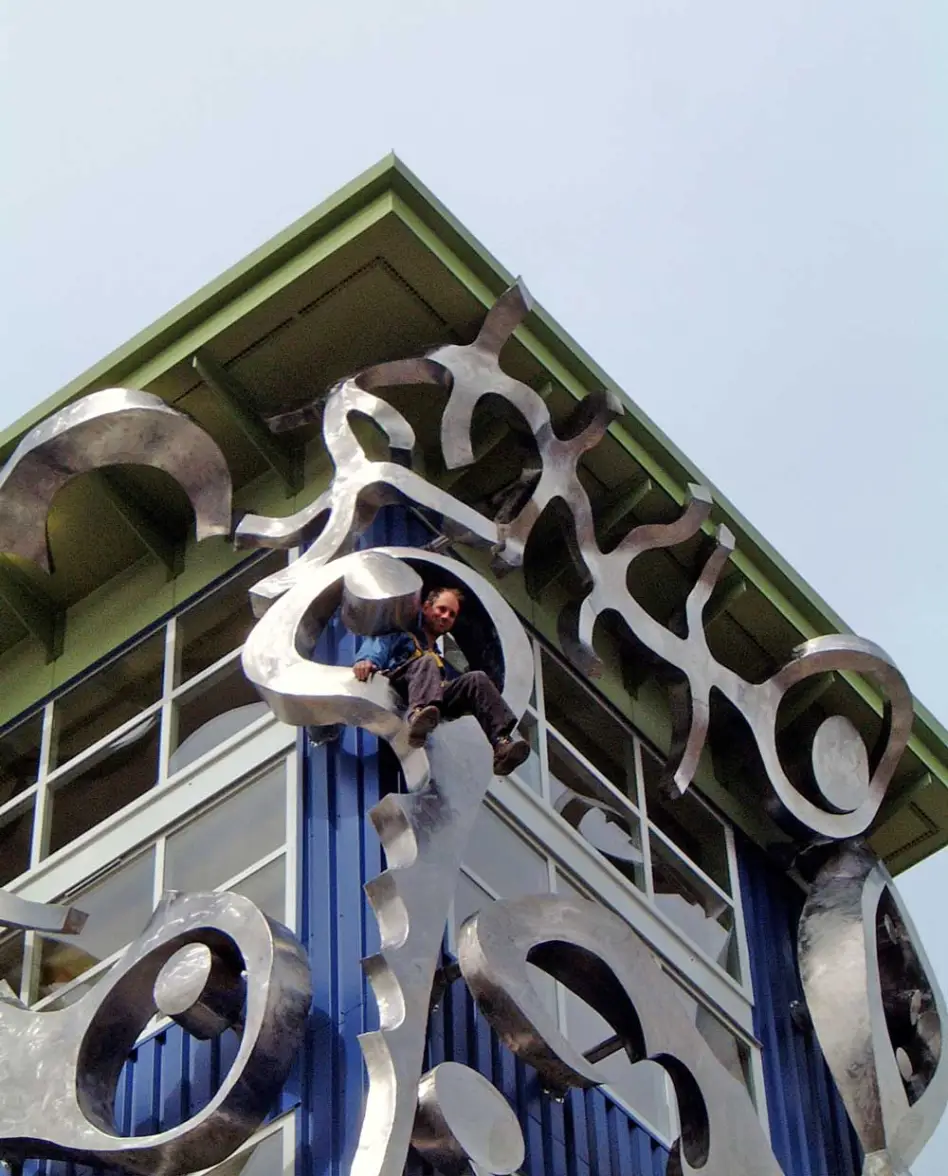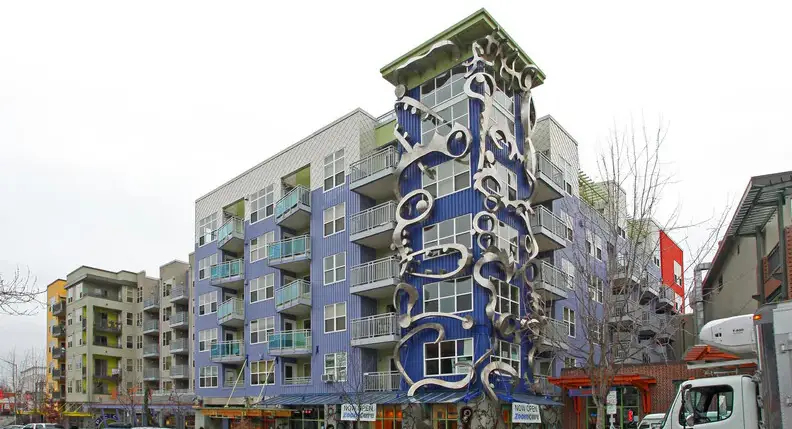Monsruang: Jewels of Heaven Gleam Above the City
Perched 65 feet high on the corner tower of the Epi Building, sculptor Mark Stevens’ brushed-stainless steel masterpiece, Monsruang—also known as Jewels of Heaven—commands both skyline and spirit. It’s not just a sculpture; it’s a celestial anchor for the city’s creative pulse.
A Beacon in Brushed Steel
Monsruang rises like a vision—dynamic, reflective, and impossible to ignore. The sculpture’s name, derived from Thai origins, loosely translates to “heavenly jewels,” and that sense of reverence and mysticism is etched into every curve and facet. Fabricated in brushed stainless steel, it catches and plays with sunlight throughout the day, transforming the Epi Building’s corner tower into a vertical stage for the dance between form and light.
This is not decorative filler—it’s intentional architecture fused with fine art. The sculpture’s elegant proportions and gleaming surfaces echo both natural phenomena and futuristic design. From a distance, Monsruang resembles a crystalline eruption—a modern totem that speaks in silence and steel.

Over Six Stories
Anchored securely to the six-story-high corner of the Epi Building, Monsruang doesn’t just sit on the structure—it completes it. Stevens’ design integrates with the building’s lines while projecting a sense of upward motion, as though pulled by gravity’s opposite.
The contrast is part of the brilliance: solid metal and floating presence. Urban geometry and organic flow. The building becomes more than a box of commerce—it becomes a pedestal.
The Artist’s Vision
Mark Stevens is no stranger to working at scale or at the intersection of sculpture and environment. His works are often marked by a deep respect for materials and a drive to push public art beyond passive viewing into a kind of spatial experience. With Monsruang, he’s created something that elevates—not just physically, but symbolically.
Whether viewed from street level or glimpsed from afar, the sculpture provokes questions, awe, and reflection. What is it reaching for? What does it protect? What does it mean for art to exist in the air, between earth and sky?
In a city already marked by architecture and ambition, Monsruang stands out not for its dominance, but for its grace. It reminds us that art doesn’t have to be confined to galleries or hidden behind velvet ropes. Sometimes, the most powerful works live in plain sight—above us, around us, whispering wonder as we pass below.

